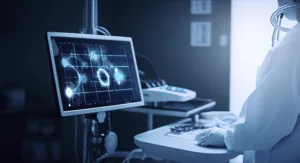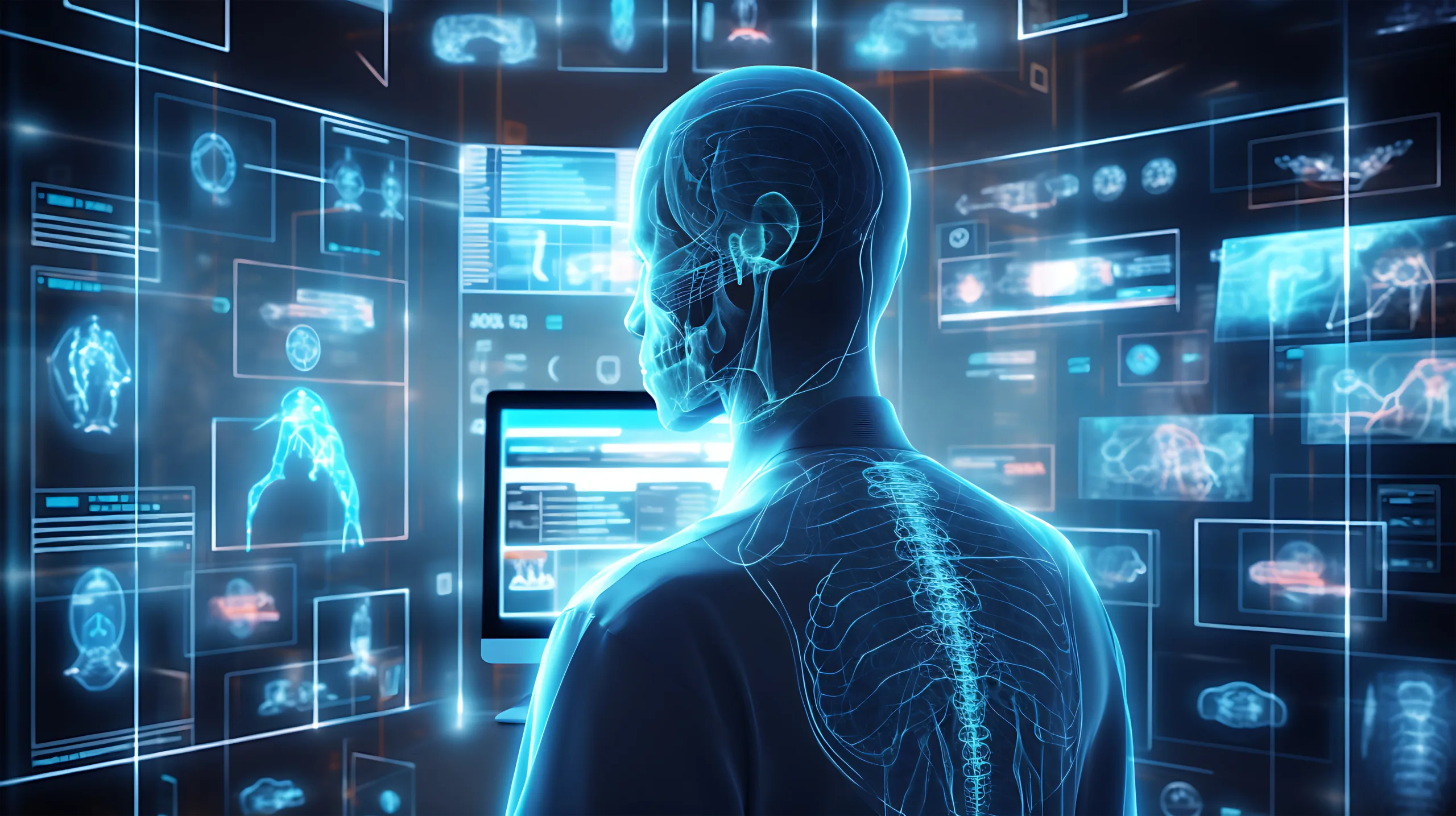AI innovations in 2025 will make diagnostics even more efficient. With advanced machine learning, deep learning, and neural networks, AI will detect diseases at earlier stages. This means doctors can start treatment sooner, improving survival rates and quality of life. AI is not just speeding up the process—it’s also increasing accuracy, reducing misdiagnoses, and ensuring that patients receive the right care.
From medical imaging to wearable technology, AI is revolutionizing the way we detect and treat illnesses. In this article, we will explore the top AI innovations transforming diagnostics in 2025.
The Role of AI in Faster and More Accurate Diagnoses
Speed and accuracy are crucial in medical diagnostics. A delayed or incorrect diagnosis can lead to severe complications, unnecessary treatments, or even fatalities. AI helps overcome these challenges by analyzing large datasets, identifying patterns, and making precise predictions.
AI-powered diagnostic tools work faster than human doctors. These tools can process thousands of medical images, lab reports, and patient histories in seconds. They compare new cases with past records, ensuring that diagnoses are based on real-world data. Unlike human specialists, AI does not suffer from fatigue or biases. It consistently delivers accurate results, helping doctors make informed decisions.
Another advantage of AI innovations is its ability to integrate with electronic health records (EHRs). AI can scan a patient’s medical history and suggest possible conditions before symptoms even appear. This leads to early detection and better treatment planning. In 2025, AI will play an even bigger role in making diagnostics faster, reducing hospital wait times, and ensuring that patients receive the right treatment at the right time.
AI-Powered Imaging: Revolutionizing Radiology and Medical Scans
Medical imaging is one of the most critical aspects of diagnostics. Doctors rely on X-rays, MRIs, CT scans, and ultrasounds to detect abnormalities. However, interpreting these images can be time-consuming and sometimes prone to human error. AI-powered imaging is changing that.
Deep learning algorithms can now analyze medical images with incredible accuracy. AI can highlight potential issues that the human eye might miss. For example, AI innovations can detect small tumors, fractures, or organ damage much earlier than a doctor. This leads to early intervention and better patient outcomes.
Radiologists benefit from AI by reducing their workload. Instead of spending hours analyzing images, AI helps them focus on complex cases. In 2025, AI-powered imaging will be an essential tool in hospitals worldwide. Patients will receive faster diagnoses, and doctors will have more confidence in their findings.
Machine Learning for Early Disease Detection: A Game Changer
One of AI’s greatest strengths is predicting diseases before symptoms appear. Machine learning models analyze patterns in a patient’s genetic data, lifestyle choices, and medical history. These models can detect warning signs of conditions like cancer, diabetes, or heart disease early on.

For example, AI innovations can predict whether a person is at risk of developing Alzheimer’s based on subtle cognitive changes. It can also detect early signs of lung cancer in smokers by analyzing breathing patterns. This allows patients to take preventive measures and doctors to start treatment before the disease progresses.
In 2025, machine learning will become even more sophisticated. AI innovations will continuously improve as it learns from new medical data. This means earlier diagnoses, better treatment outcomes, and fewer deaths from preventable diseases.
AI in Pathology: Enhancing Lab Test Accuracy and Speed
Pathology is another area where AI is making a huge impact. Diagnosing diseases like cancer, infections, and autoimmune disorders often relies on analyzing lab samples. However, traditional lab testing can be slow and subject to human interpretation errors. AI is changing this by automating the process.
AI-powered pathology tools can examine blood samples, biopsies, and tissue slides faster and more accurately than human pathologists. These tools use deep learning to identify cancerous cells, bacterial infections, and genetic mutations. They compare new samples with thousands of previous cases to ensure precise results.
In 2025, AI in pathology will help reduce misdiagnoses and speed up lab results. This means patients will receive faster diagnoses, allowing doctors to start treatment without delays.
The Impact of AI Chatbots and Virtual Assistants in Diagnosis
AI chatbots and virtual assistants are changing how patients interact with healthcare providers. These tools use natural language processing (NLP) to communicate with patients, ask about symptoms, and suggest possible conditions.
For example, if a patient enters their symptoms into an AI-powered chatbot, it can provide preliminary advice. It may recommend at-home care or advise seeing a doctor. This reduces unnecessary hospital visits and helps patients make informed decisions about their health.
Doctors also benefit from AI assistants. These tools can organize patient records, schedule appointments, and even suggest possible diagnoses based on medical data. In 2025, AI chatbots will become smarter, improving accessibility to healthcare and reducing strain on medical professionals.
Deep Learning Algorithms for Predictive Healthcare
Deep learning is an advanced form of AI that allows computers to learn from large datasets. In healthcare, deep learning is used to predict future health risks based on a person’s medical history.
For example, AI can predict if a patient is likely to develop heart disease based on cholesterol levels, diet, and genetics. It can also anticipate which cancer treatments will be most effective for an individual based on past cases.
Predictive healthcare will become even more accurate in 2025. With continuous learning, AI will provide better insights, allowing doctors to take preventive measures before conditions worsen.
AI-Powered Wearables: Real-Time Health Monitoring for Faster Diagnoses
Wearable devices like smartwatches and fitness trackers are becoming more advanced with AI innovations. These devices monitor vital signs such as heart rate, oxygen levels, and sleep patterns in real time.
AI analyzes this data and detects any abnormalities. If a person’s heart rate is irregular, their smartwatch may alert them to seek medical attention. Some AI-powered wearables can even predict seizures in epilepsy patients or detect early signs of respiratory diseases.
In 2025, AI-powered wearables will play a critical role in healthcare. They will help doctors diagnose conditions remotely and allow patients to track their health more effectively.
How AI Innovations is Improving Personalized Treatment Plans
Not all patients respond to treatments the same way. AI is helping doctors create personalized treatment plans based on an individual’s unique genetic makeup, medical history, and lifestyle.
For example, in cancer treatment, AI innovations can analyze a patient’s tumor profile and suggest the most effective drug therapy. It can also adjust treatments in real time based on how a patient is responding.
In 2025, AI-driven personalized medicine will become standard. AI innovations will improve treatment success rates and reduce the chances of side effects.
How AI innovations is Shaping the Future of Medical Diagnostics
AI innovations are transforming healthcare by making diagnostics faster, more accurate, and widely accessible. From AI-powered imaging to predictive healthcare, these technologies are improving patient outcomes and reducing the burden on doctors.
As AI continues to evolve, its impact on diagnostics will only grow. The future of healthcare will be smarter, more efficient, and focused on early disease detection. In 2025, AI innovations will not just assist doctors—it will become an essential part of every diagnosis, ensuring better health for all.

